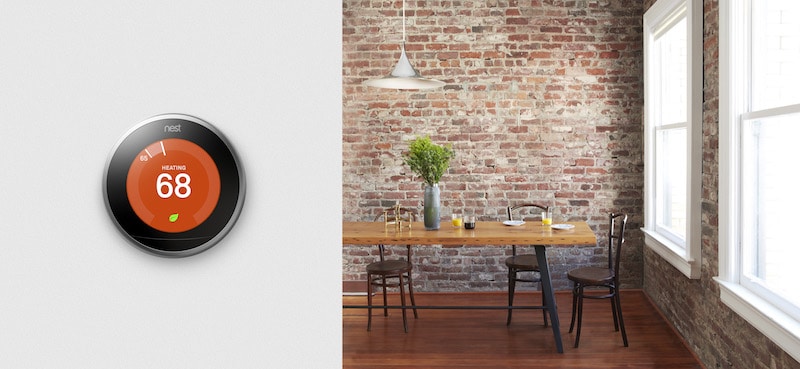Google’s smart home acquisition Nest, has opened up its communication protocol Nest Weave to developers. Meaning third-party hardware makers will now access to many of the technologies previously reserved for Nest's own products. Under plans announced last week, any developer can apply to have access to the protocol, for free. "We're opening up to developer feedback", said the head of its Works with Nest program, Greg Hu.

Weave was designed by Nest when the company first started building its round thermostat. Weave provides a secure, low-power mesh at the application layer to enable one product to interact with and trigger actions in others.
Most connected-home systems rely on a central control panel to coordinate everything. In order for your lights to come on when you open a door, for example, the door sensor (or smart door lock) sends a message to the control panel, and the control panel then sends a message to your smart light. A smart door lock (or sensor) that speaks Nest Weave will send a message directly to a smart light that speaks Nest Weave. No control panel is needed, and the latency between the door opening and the light coming on is greatly reduced (Nest claims end-to-end latencies of less than 100 milliseconds, even on a large network).
Nest’s Weave requires only 64 kilobytes of memory to run and can fit on a sensor. It runs over the Thread wireless protocol that Nest has helped develop with several semiconductor companies and Samsung, but it can also operate over other wireless radio protocols such as Wi-Fi because it communicates at the software layer. This latest development illustrates the strong competition between big players in the smart home sector.
A recent Memoori report defines the IoT in buildings (BIoT) as: “The overlaying of an IP network, connecting all the building services monitoring, analyzing and controlling without the intervention of humans”. Nest’s Weave allows such a mesh network designed specifically for the home, creating a Home Internet of Things, or HIoT, of sorts.
[contact-form-7 id="3204" title="memoori-newsletter"]
The beauty of a mesh network like this is that it doesn’t depend on your router. You’ll still need a router when the network clients need to reach the cloud, or when you want to control them from the cloud, but the mesh network itself won’t fail if you lose your Internet connection. Also, because Thread is a self-healing network, it will automatically rebuild itself if any device goes offline because its battery died, it was unplugged, or it just fails.
Memoori’s Internet of Things in Smart Buildings report indicates the overall market for systems in commercial buildings will grow from $110.9Bn in 2014 to $181.1Bn in 2020, with Physical Security, Lighting Control and Fire Detection & Safety representing the 3 largest segments.
Weave will let Nest compete with Apple’s HomeKit, which will start making credible, although belated, forays into the market with real devices this autumn. While Apple’s program is built around the iOS software running inside Apple’s phones and tablets and requires specialized hardware and certification, Nest’s program is a bit more open and works with both Android and Apple phones. Nest Weave will also be up against AllJoyn, Qualcomm’s open source protocol that is championed by the AllSeen Alliance. AllJoyn is backed by a good number of big names but is, as yet, in very few devices.
Nest is also keen to clarify that Nest Weave should not be confused with Google Weave. "Nest Weave is our application protocol that works at the application layer", Hu said, "whereas Google uses 'Weave' for their overall program. For them, 'Weave' represents working across a broader space but for us, it is just inside the home". If you’re wondering why they didn’t call it something else entirely, "well, 'Weave' sits over 'Thread' and so that makes sense for us. We've also been using the word for five years" Hu clarified.



